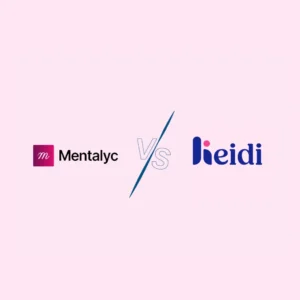In a rapidly evolving mental health landscape—particularly in regions where awareness is growing but accessibility remains inconsistent—therapists with private practice face both a challenge and an opportunity. The challenge lies in navigating a saturated market where simply being qualified is no longer enough. The opportunity, however, is immense: more people are actively seeking support, and therapists who approach their work with intention, clarity, and strategic marketing are poised to build thriving private practices.
1. Niche Specialization
Before investing in any promotional effort, therapists need to understand who they are best suited to serve. Specializing in a specific population, issue area, or modality not only sharpens your clinical focus but also helps potential clients feel seen, understood, and confident in reaching out.
Whether your strengths lie in working with adolescents navigating gender identity, new mothers struggling with postpartum depression, or couples in intercultural relationships, your niche becomes a bridge that connects your services with the people who need them most.
Implementation Framework:
- Clinical Population Definition: Establish detailed demographic and psychographic profiles based on practitioner expertise and community needs assessment. Document specific age ranges, presenting issues, socioeconomic factors, and cultural considerations relevant to targeted populations.
- Treatment Protocol Development: Formulate standardized assessment procedures and evidence-based intervention sequences optimized for specialized populations. Document treatment pathways with measurable outcome indicators, expected timeframes, and progress benchmarks.
- Competitive Analysis: Conduct thorough market research identifying existing providers serving target populations within the geographic service area. Document service gaps, accessibility barriers, and unmet clinical needs within the identified niche.
- Specialization Certification: Pursue advanced credentials specifically aligned with chosen specialization. Document certification requirements, supervised practice hours, and continuing education pathways required for specialization maintenance.
Application Examples
Successful niche specialization manifests across various private practice models. Practitioners specializing in peripartum mental health have established dedicated treatment protocols addressing hormonal influences on mood regulation, attachment formation challenges, and partner relationship dynamics. Similarly, clinicians focusing on executive burnout have developed specialized assessment batteries measuring cognitive depletion, performance anxiety metrics, and organizational stressor inventories.
Effective specialization requires both clinical proficiency and market differentiation communication. The specialization messaging should emphasize specific outcomes achieved through targeted interventions rather than generic therapeutic benefits.
2. Digital Presence Development
In today’s world, your digital footprint is often the first impression you make. A professional website, search-engine-optimized (SEO) content, and an active presence on directories like Therapize India, The Mind Clan, and Google Business can significantly increase your visibility.
Your website should reflect your voice and values while offering clarity around services, fees, availability, and the therapeutic process. Including FAQs, consent forms, and a simple appointment booking system adds to the client’s sense of safety and transparency.
Digital Infrastructure Requirements
- Website Architecture: Some Must-Haves for Your Website:
- An engaging “About Me” section with your credentials and story
- A services page broken down by issue or population
- Blog articles addressing common concerns
- Online booking or a contact form
- Testimonials (with consent) and FAQ sections
- Search Engine Optimization: Implement location-based keyword integration targeting specific treatment specializations and clinical populations. Develop localized content addressing region-specific mental health concerns, insurance navigation challenges, and community resources.
- Directory Management: Establish consistent profiles across healthcare directories with standardized service descriptions, credential presentation, and specialization communication. Prioritize directories demonstrating highest conversion metrics within target populations.
- Content Development Strategy: Create authoritative resources addressing common presenting concerns within specialization areas. Develop content hierarchies progressing from introductory psychoeducation through specialized treatment considerations and maintenance strategies.
Implementation Methodology
Digital presence development requires systematic assessment and optimization. Conduct quarterly analytics reviews evaluating user engagement patterns, conversion metrics, and referral source attribution. Implement A/B testing methodologies comparing alternative messaging approaches, visual presentations, and call-to-action frameworks.
Website architecture should incorporate progressive engagement pathways guiding potential clients from initial information gathering through appointment scheduling. Implement strategic content hierarchies addressing varying levels of treatment readiness from contemplation through action stages.
3. Referral Network Establishment
While digital marketing is crucial, many of the most consistent referrals still come from human relationships. Therapists who build connections with other professionals—doctors, school counselors, HR managers, and fellow therapists—are often better positioned to grow their practices sustainably.
This is particularly true in regions where clients rely heavily on word-of-mouth or trusted sources when choosing a therapist.
Network Development Methodology
- Referral Source Identification: Document potential referral partners categorized by profession, specialty area, and client demographic alignment. Prioritize sources demonstrating complementary rather than competitive service offerings.
- Value Proposition Development: Formulate specialized communication frameworks for each referral category articulating specific client benefits resulting from the referral relationship. Document bidirectional referral protocols addressing information sharing parameters, communication expectations, and outcome reporting mechanisms.
- Relationship Maintenance Systems: Implement structured touchpoint schedules including quarterly updates, case consultation availability, and professional development collaboration. Document communication preferences and content priorities for each referral source.
- Cross-Disciplinary Integration: Establish specialized consultation availability for complex cases requiring multi-disciplinary management. Develop standardized consultation formats addressing medication interaction considerations, treatment coordination protocols, and outcome measurement methodologies.
Strategic Implementation
Effective referral relationships require systematic cultivation and maintenance. Psychiatric practices demonstrating highest referral generation rates implement structured communication protocols including initial consultation summaries, treatment plan distributions, and progress updates at standardized intervals.
Primary care integration represents particularly valuable referral network development. Establish streamlined referral protocols addressing common consultation scenarios including medication management coordination, diagnostic clarification requests, and treatment resistance evaluations.
4. Treatment Specialization
In a crowded field, specialization is more than a branding tactic—it’s a clinical asset. Offering specific modalities such as EMDR, DBT, play therapy, expressive arts, or somatic techniques not only expands your therapeutic toolbox but also signals to clients that you can offer targeted, evidence-based help for their concerns.
Specialization Categories
- Population-Specific Protocols: Develop comprehensive treatment approaches addressing unique requirements of specific demographic groups. Examples include adolescent anxiety interventions incorporating developmental considerations, geriatric depression protocols addressing medical comorbidities, and trauma treatments modified for cultural contexts.
- Disorder-Specific Interventions: Implement specialized protocols demonstrating efficacy for specific diagnostic categories. Document assessment methodologies, intervention sequences, progress metrics, and maintenance strategies specific to each disorder classification.
- Therapeutic Methodology Specialization: Acquire advanced training in specific treatment modalities establishing procedural expertise and theoretical foundation. Examples include Eye Movement Desensitization and Reprocessing certification, Dialectical Behavior Therapy intensives, and Internal Family Systems training sequences.
- Integrated Treatment Models: Develop systematic protocols combining multiple evidence-based approaches addressing complex presentations. Document integration frameworks, decision trees guiding methodology selection, and coordination protocols when multiple approaches are implemented concurrently.
Implementation Considerations
Specialization development requires substantial resource investment with corresponding differentiation benefits. Practices demonstrating highest specialization effectiveness implement continuous assessment methodologies measuring intervention fidelity, outcome comparison metrics, and client-specific response patterns.
Treatment specialization communication significantly impacts referral generation. Develop educational materials for potential referral sources explaining specialized methodology applications, expected outcome parameters, and appropriate candidate identification criteria.
5. Operational Systems Integration
Running a private practice involves far more than providing therapy. Administrative tasks, scheduling, billing, documentation, and follow-ups can quickly become overwhelming. Investing in a good private practice management system can streamline these tasks and reduce stress.
System Implementation Requirements
- HIPAA Compliance Standards: All digital systems handling client data must strictly comply with HIPAA (or corresponding regional privacy laws). This includes encrypted data storage, secure messaging, audit trails, and breach notification protocols.
- Documentation Architecture: Implement standardized templates for intake, treatment plans, progress notes, and discharge summaries. Tools like Mentalyc can automatically generate therapy progress notes from your session recordings while ensuring HIPAA compliance, significantly reducing administrative time without compromising quality.
- Financial Management Integration: Use practice management platforms that automate insurance verification, claims submissions, client billing, and payment tracking—while ensuring data security and regulatory adherence.
- Scheduling Optimization: Offer HIPAA-compliant client portals with self-scheduling, automated reminders, cancellation management, and easy rescheduling, reducing administrative friction and no-show rates.
- Secure Communication Infrastructure: Implement secure client messaging systems for appointment reminders, resource sharing, and follow-ups. Ensure all exchanges protect client confidentiality and meet privacy law standards.
Choosing the Right Systems: When selecting operational platforms:
- Prioritize specialty-specific functionality (e.g., group therapy scheduling if needed)
- Confirm regional regulatory alignment (e.g., HIPAA, GDPR where relevant)
- Assess integration capability with other systems (payment gateways, EHRs)
- Plan for scalability and total ownership cost over 3–5 years
6. Client Experience Optimization
Attracting clients is only half the battle. Retaining them and ensuring a positive, consistent experience are what make a private practice sustainable. The therapeutic relationship starts before the first session—often with the initial email or website visit—and continues through every session and follow-up.
Experience Management Framework
- Initial Engagement Protocol: Develop comprehensive systems addressing inquiry response, intake scheduling, preliminary documentation distribution, and pre-appointment orientation. Implement response time standards ensuring consistent communication within established timeframes.
- Clinical Process Transparency: Create detailed orientation materials explaining assessment procedures, treatment planning methodologies, session structures, and progress evaluation frameworks. Provide explicit explanation of therapeutic modalities, expected participation requirements, and outcome expectations.
- Progress Evaluation Systems: Implement systematic outcome measurement utilizing validated assessment instruments appropriate for specific presenting concerns. Schedule regular progress reviews communicating treatment trajectory, goal attainment levels, and treatment plan modifications.
- Termination Management: Establish structured protocols addressing successful completion, referral processes, maintenance planning, and follow-up procedures. Implement post-treatment communication sequences reinforcing maintenance strategies and establishing reconnection parameters if needed.
Implementation Considerations
Client experience optimization requires systematic assessment and refinement. Implement structured feedback collection methodologies including satisfaction measurement, process evaluation, and outcome assessment. Analyze feedback data identifying experience improvement opportunities throughout the treatment continuum.
Physical environment significantly impacts client experience. Evaluate office design considering privacy protection, comfort optimization, sensory considerations, and accessibility requirements. Document specific environmental requirements for specialized populations including sensory-sensitive clients, mobility-impaired individuals, and those with environmental sensitivities.
7. Professional Development Integration
Therapists who continue to grow professionally are more likely to stay relevant, inspired, and connected to their clients. In a world where modalities evolve and client needs become more nuanced, ongoing education is not optional – it’s essential.
Development Framework
- Competency Assessment: Conduct systematic evaluation identifying skill enhancement opportunities, knowledge gaps, and specialization development requirements. Document specific development objectives with corresponding implementation timelines and measurement criteria.
- Education Selection Criteria: Prioritize professional development addressing specialization enhancement, evidence-based protocol implementation, and emerging treatment applications. Evaluate educational opportunities based on empirical foundation, implementation applicability, and integration potential.
- Learning Integration: Implement structured protocols transferring acquired knowledge into clinical application. Document specific implementation steps, supervision requirements, and outcome measurement methodologies for new interventions or approaches.
- Professional Community Engagement: Establish ongoing participation in specialized consultation groups, professional associations, and research communities aligned with practice focus. Document specific engagement objectives addressing knowledge acquisition, professional visibility, and collaborative development.
Application Methodology
Professional development effectiveness requires strategic selection and implementation. Develop annual development plans identifying specific competency objectives, learning methodologies, implementation timelines, and outcome metrics. Prioritize development activities demonstrating direct application potential within established specialization areas.
Continuing education dissemination enhances return on investment. Implement knowledge transfer protocols sharing acquired information through team training sessions, implementation planning meetings, and resource development activities. Document specific application methodologies for each significant learning acquisition.
8. Service Diversification Implementation
Revenue stream diversification enhances private practice stability while expanding intervention accessibility.
Diversification Categories
- Service Delivery Modalities: Implement multiple treatment formats addressing varying client needs, accessibility requirements, and intensity levels. Examples include traditional individual sessions, intensive outpatient protocols, brief intervention models, and extended session formats.
- Group Treatment Programs: Develop structured group interventions addressing specific clinical concerns, population needs, or treatment objectives. Document group protocols including screening criteria, session structures, measurement frameworks, and co-facilitation requirements.
- Educational Programming: Create psychoeducational curricula addressing prevention, skill development, and maintenance requirements. Implement programming through various delivery channels including workshops, webinars, recorded modules, and interactive platforms.
- Consultation Services: Establish specialized consultation availability for professionals, organizations, and community entities. Document consultation frameworks including assessment methodologies, recommendation formats, and implementation support protocols.
Implementation Strategy
Service diversification requires systematic development and evaluation. Conduct thorough needs assessment identifying service gaps, accessibility barriers, and unmet clinical needs within the target population. Prioritize diversification initiatives
Conclusion
Marketing for therapists isn’t about flashy gimmicks or compromising your values. It’s about knowing your purpose, communicating with clarity, and delivering exceptional service. Whether through online strategies, referral networks, specialized services, or streamlined operations, the goal is to build a private practice that is not only financially viable—but also emotionally fulfilling and socially impactful.
Therapists don’t just hold space for healing—they build systems that make that healing more accessible, sustainable, and far-reaching. With the right tools, relationships, and mindset, your private practice can become a thriving, life-affirming space—for both you and the people you serve.
Why other mental health professionals love Mentalyc

“Do yourself a favor, make your life easier. Use the tools that are readily available … I found Mentalyc to be one of the best tools that I’ve ever used.”
Licensed Marriage and Family Therapist

“If I were recommending this software to a colleague, I would tell them that it is the best thing that they could do for their practice.”
Licensed Professional Counselor

“For those who have hesitations … It is a lifesaver. It will change your life and you have more time to be present with your patients.”
Licensed Clinical Social Worker

“It immediately changed my quality of life, personally and professionally. I went from 3–4 hours a week of notes to 1 hour at most … that alone is invaluable personally and professionally.”
Owner/Independently Licensed Marriage & Family Therapist (IMFT)






